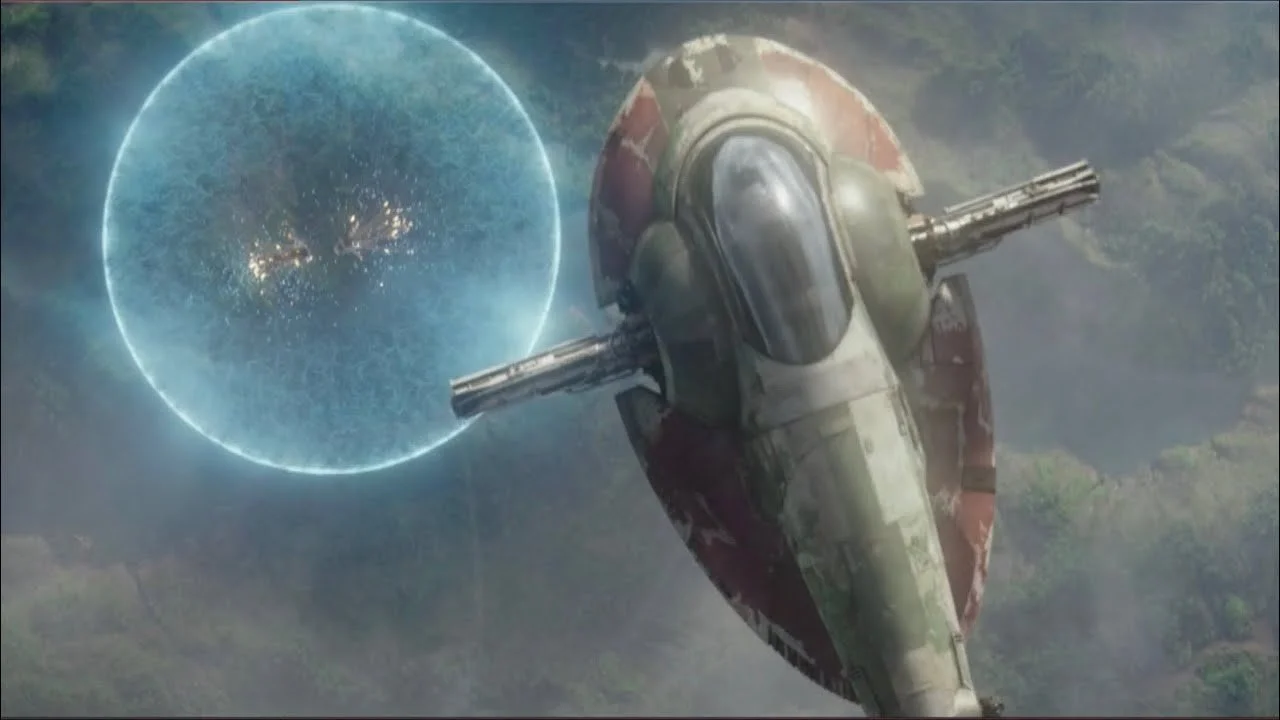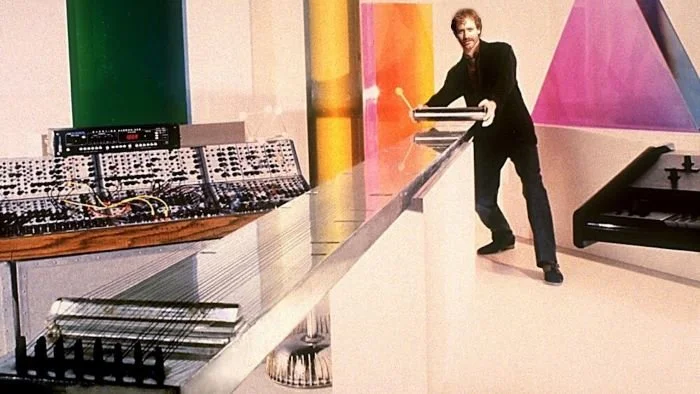Eargasm - The History Behind The Blaster Beam
Image Source: YouTube
One of the most remarkable sound effects of the Star Wars prequel trilogy is that of the seismic change. It was used by Jango Fett against Obi-Wan Kenobi in the asteroid field above Geonosis in Attack of the Clones, and revisited by Boba Fett in The Mandalorian. It was a few moments of total silence (which sound designer Ben Burtt called an "audio black hole"), followed by a deep, rumbling, and sinister BOOOOM.
It is easy to assume that this effect was simply created with a synthesizer—someone pushing a few buttons, adjusting some sliders, and then adding a ton of filters and echos. In actuality, the device used to make this sound is a physical instrument that was much older than 2002.
From Child Actor To Inventor
Image Source: craighuxley.com
Craig Hundley started acting at a young age. At the age of 13, he played James T. Kirk's nephew Peter Kirk in the Star Trek: The Original Series episode "Operation Annihilate" (1967), followed by another young character in the Season 3 episode "And The Children Shall Lead" one year later. He also had roles in Kung Fu, The Flying Nun, and Bewitched.
RELATED:
Although he continued his acting career until 1979, Hundley began to embrace his passion for music while still just a teenager. He became a renowned concert pianist, founded a band (The Craig Hundley Trio), and worked with stars like Frank Sinatra, Pat Boone, and Deep Purple.
At the age of 18, he took a two years hiatus in which he focused on studying and building new musical instruments. One of the things to come from this phase in Hundley's life (who had changed his name to Huxley) was the blaster beam.
The Evolution Of An Instrument
Although Huxley is often credited as the inventor of the blaster beam (who was granted a patent for it in 1984), the initial design of this instrument originates from John Lazelle, a somewhat obscure artist and instrument maker, who came up with it in the late 1960s to early 1970s Lazelle gave or probably rather sold his idea to the California-based musician Francesco Lupica, who built four of these instruments using long steel bars and calling it the cosmic beam. He used it in his live shows and even on an album, which was aptly titled Francesco's Cosmic Beam Experience.
It was not entirely clear how Huxley got in contact with Lupica and the cosmic beam, but he created his own version of the instrument by replacing the steel bar with aluminum and adding some additional features, calling the result blaster beam.
As Lupica never pursued legal action against Huxley, it seems that the former had no hard feelings against the latter for "stealing" his idea, having it patented, and making it famous.
What Exactly Is A Blaster Beam?
Image Source: craighuxley.com
The main component of the beam is a 12 to 18-foot bar made from steel (in Lupica’s model) or aluminum (in Huxley’s model), which acts as the soundbox. Numerous tensed wires are mounted on top of this bar, with electric guitar pickups beneath them. Both the soundbox and the wires can be stroked with bars, tubes, or clappers made from steel, aluminum, or wood. The wires can also be plucked with fingers or strummed with violin bows. The many different ways of interacting with the instrument produce its own unique and distinct sound.
From Wonder Woman To Picard
Huxley first used his blaster beam in Season 3 of Wonder Woman (1979). It would have its breakthrough as the "voice" of V'ger in Star Trek - The Motion Picture, also in 1979. Composer Jerry Goldsmith liked the sound of the blaster beam so much that he heavily featured it on his soundtrack for the movie.
Huxley continued to provide the blaster beam sound effects for numerous other films, including Star Trek II - The Wrath of Khan (1982), Cat People (1982), Poltergeist (1982), White Nights (1985), Aliens (1986), Dead Poets' Society, Back to the Future II and III (1989), 10 Cloverfield Lane (2016) and Doctor Sleep (2019). In addition, he also worked on television shows like Knight Rider, Star Trek - The Next Generation, and The Orville. Most recently, Huxley and his blaster beam can be heard in Season 3 of Star Trek: Picard, as the sound of the Shrike, Captain Vardic's ship. The blaster beam was also used for pure audio productions like Prince's Purple Rain, Michael Jackson's Man in the Mirror, and Quincy Jones' Ai No Corrida.
More Than An Eargasm?
Fans often describe the sound of the sonic charge as an "eargasm," but Huxley's instrument might have a stimulating effect also on other parts of the human physique. After a concert by Huxley in New York's Central Park, roughly a dozen women reported that they had been in several stages of arousal while listening to the instrument. It is a fact that certain frequencies can have a profound effect on human emotions, but there was never solid proof that the sound of the blaster beam can stimulate sexual feelings.
Where Can I Get A Blaster Beam?
The sad truth is that there are no shops that sell this instrument, and the few people who built one are probably not willing to sell them. This basically leaves the Do-It-Yorself approach as the only option.
Of course, it would not be the 21st century if there weren't software synthesizer modules that could recreate the sound of the blaster beam. Just press a few buttons, adjust some sliders, and add a ton of filters and echoes.
READ NEXT:
Source(s): craighuxley.com, IMDb, Wikipedia















